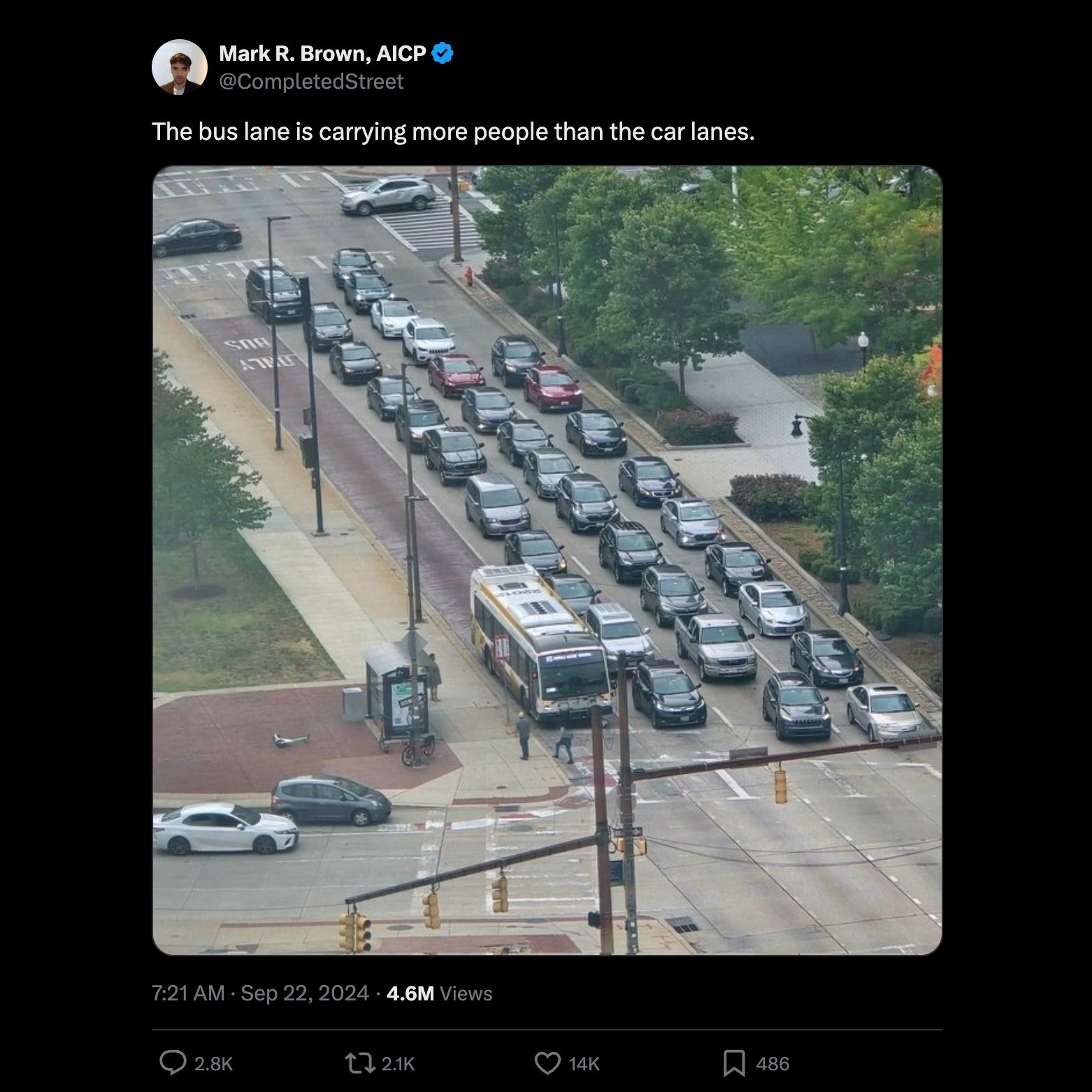Fuck Cars
A place to discuss problems of car centric infrastructure or how it hurts us all. Let's explore the bad world of Cars!
Rules
1. Be Civil
You may not agree on ideas, but please do not be needlessly rude or insulting to other people in this community.
2. No hate speech
Don't discriminate or disparage people on the basis of sex, gender, race, ethnicity, nationality, religion, or sexuality.
3. Don't harass people
Don't follow people you disagree with into multiple threads or into PMs to insult, disparage, or otherwise attack them. And certainly don't doxx any non-public figures.
4. Stay on topic
This community is about cars, their externalities in society, car-dependency, and solutions to these.
5. No reposts
Do not repost content that has already been posted in this community.
Moderator discretion will be used to judge reports with regard to the above rules.
Posting Guidelines
In the absence of a flair system on lemmy yet, let’s try to make it easier to scan through posts by type in here by using tags:
- [meta] for discussions/suggestions about this community itself
- [article] for news articles
- [blog] for any blog-style content
- [video] for video resources
- [academic] for academic studies and sources
- [discussion] for text post questions, rants, and/or discussions
- [meme] for memes
- [image] for any non-meme images
- [misc] for anything that doesn’t fall cleanly into any of the other categories
Recommended communities:
view the rest of the comments

Australian manages pretty good urban public transport, with a much lower density than the US
(Our rural public transport effectively doesn't exist though)
I don't know much about Australia, what forms public transportation are implemented over there?
Hope you're having a good day :)
Our biggest cities normally have bus and train. About half of them have some sort of light rail/tram equivalent too. The coverage isn't completely comprehensive, so it's possible to find suburbs that don't have great coverage, but by and large, it's pretty good. Footpaths and bicycle paths are common too. The cycling infrastructure is often gappy, so you on commutes etc, you can find yourself navigating spaces without dedicated cycling infrastructure, but generally, you can get a good portion of a cycle commute on dedicated bike spaces. The only roads without a pedestrian corridor of some sort are generally major highways
In our smaller and medium cities, the trains are normally inter city, not local, so they're not so much use as public transport, but there are generally buses, though with less coverage. Good pedestrian infrastructure even in smaller cities though. It's harder to survive in smaller cities without a car, but possible.
Once you get out of smaller cities and in to towns and villages though, it gets harder again.
Thanks for the reply! I hope someday the US gets there :)
Melbourne has the world's largest tram (streetcar) system!